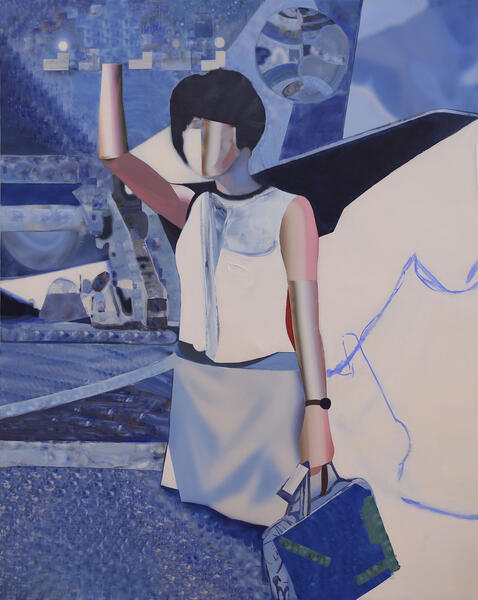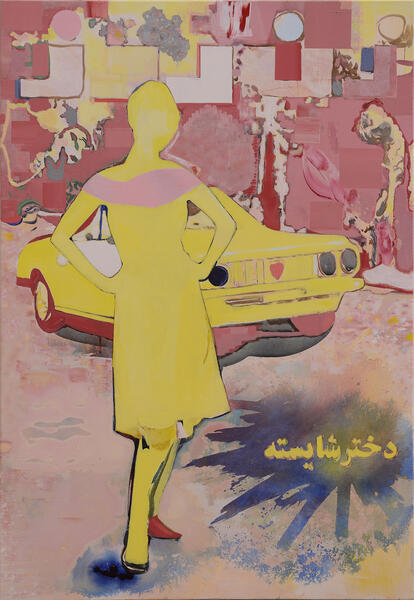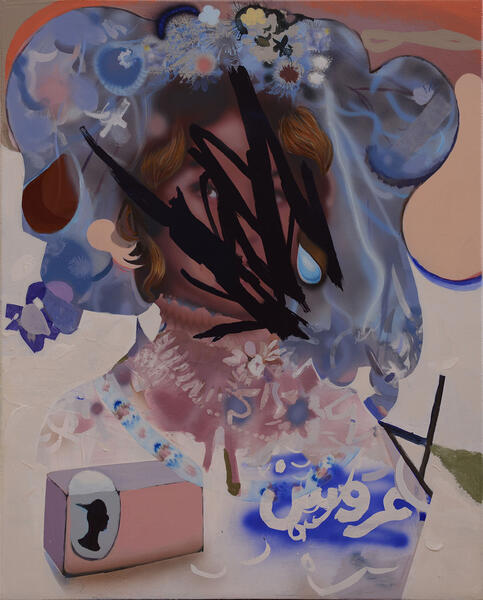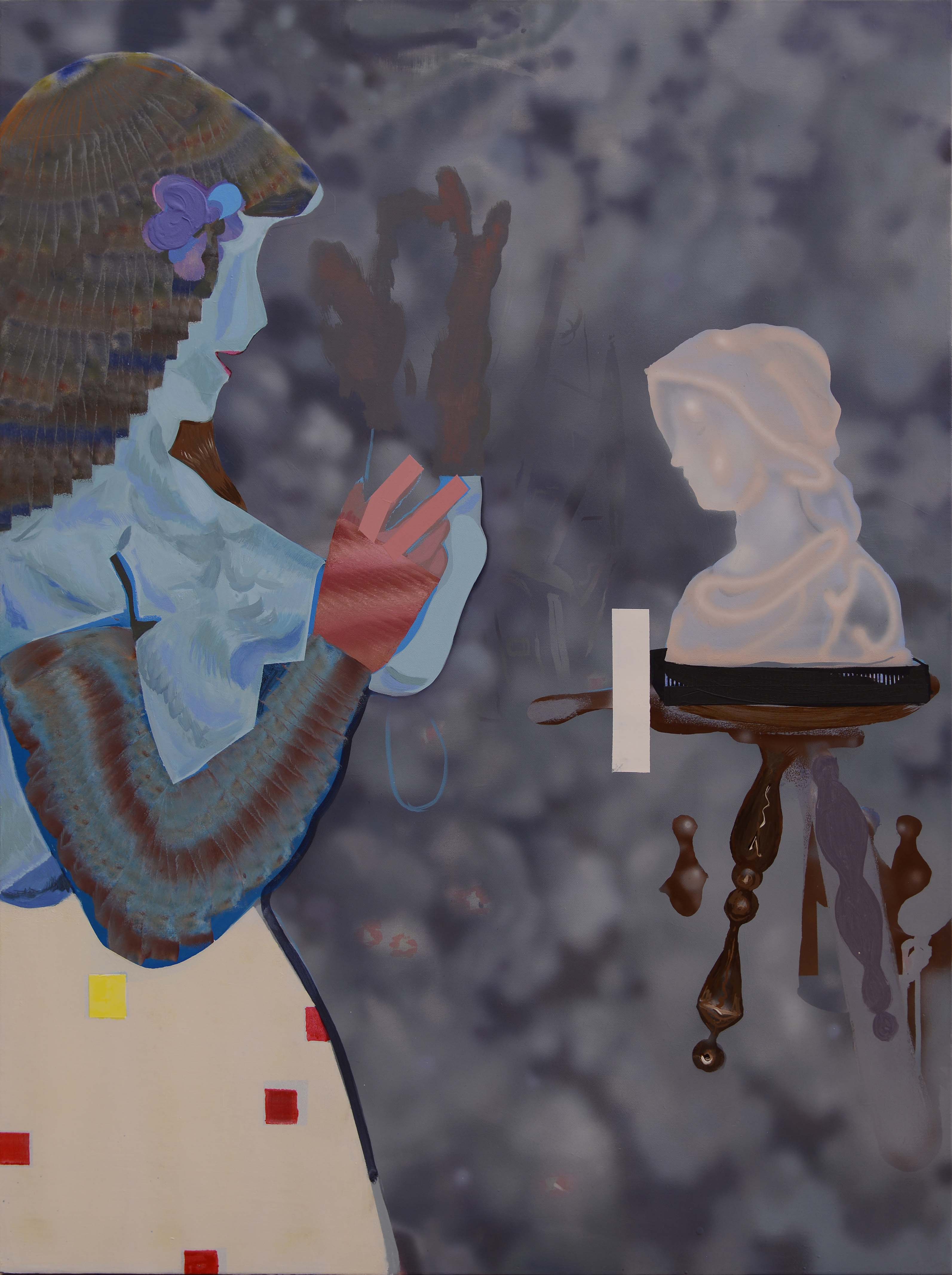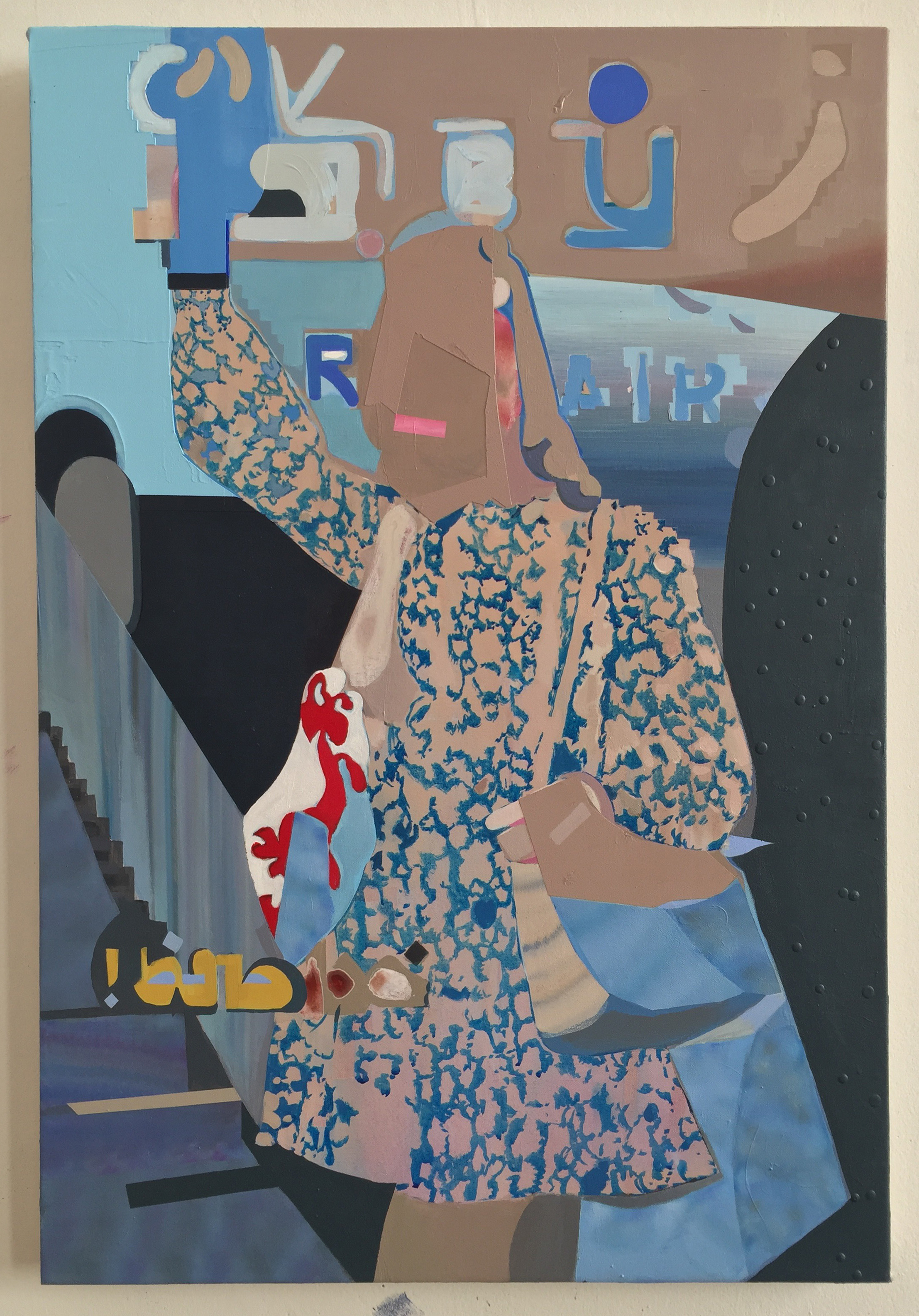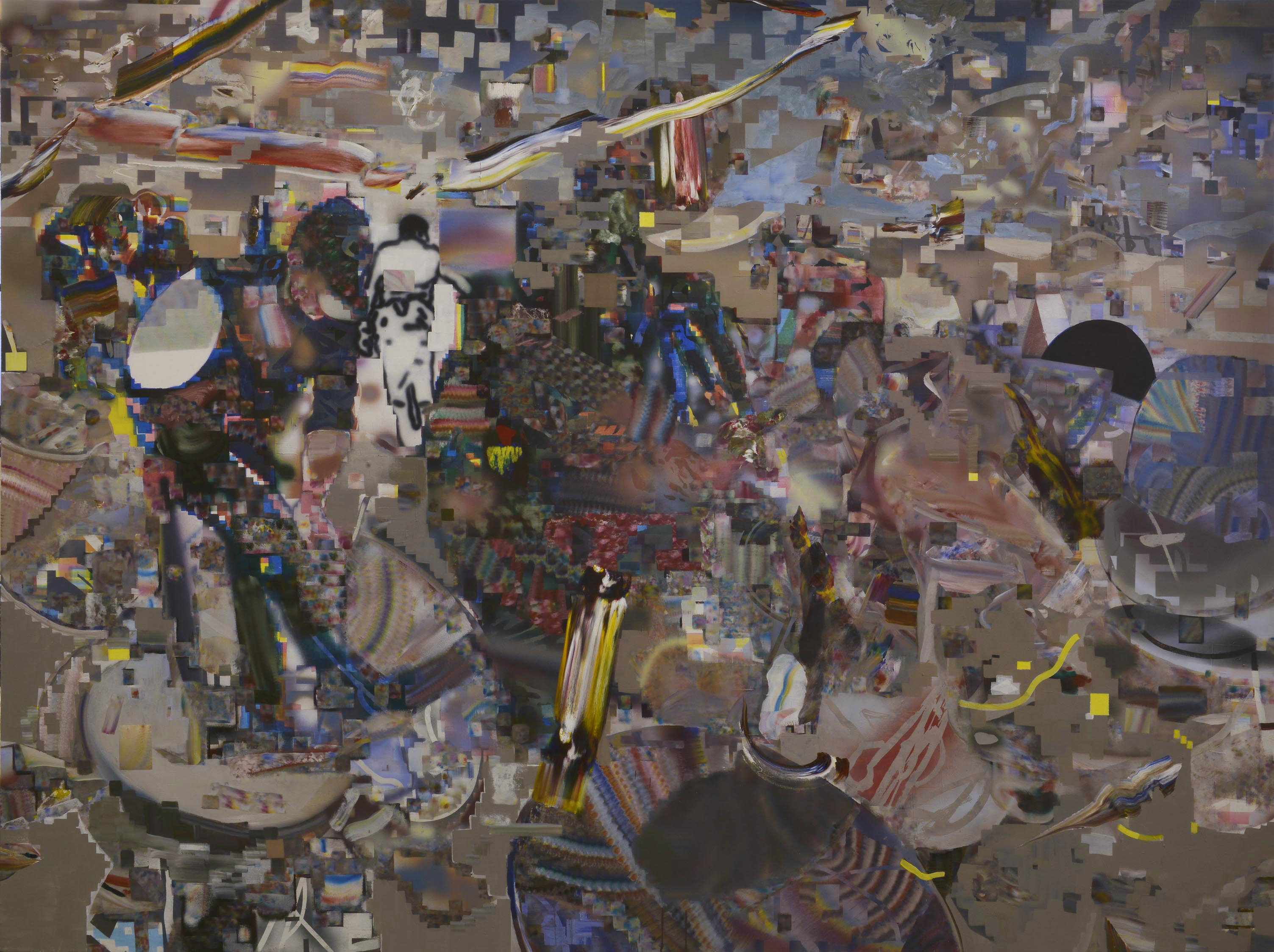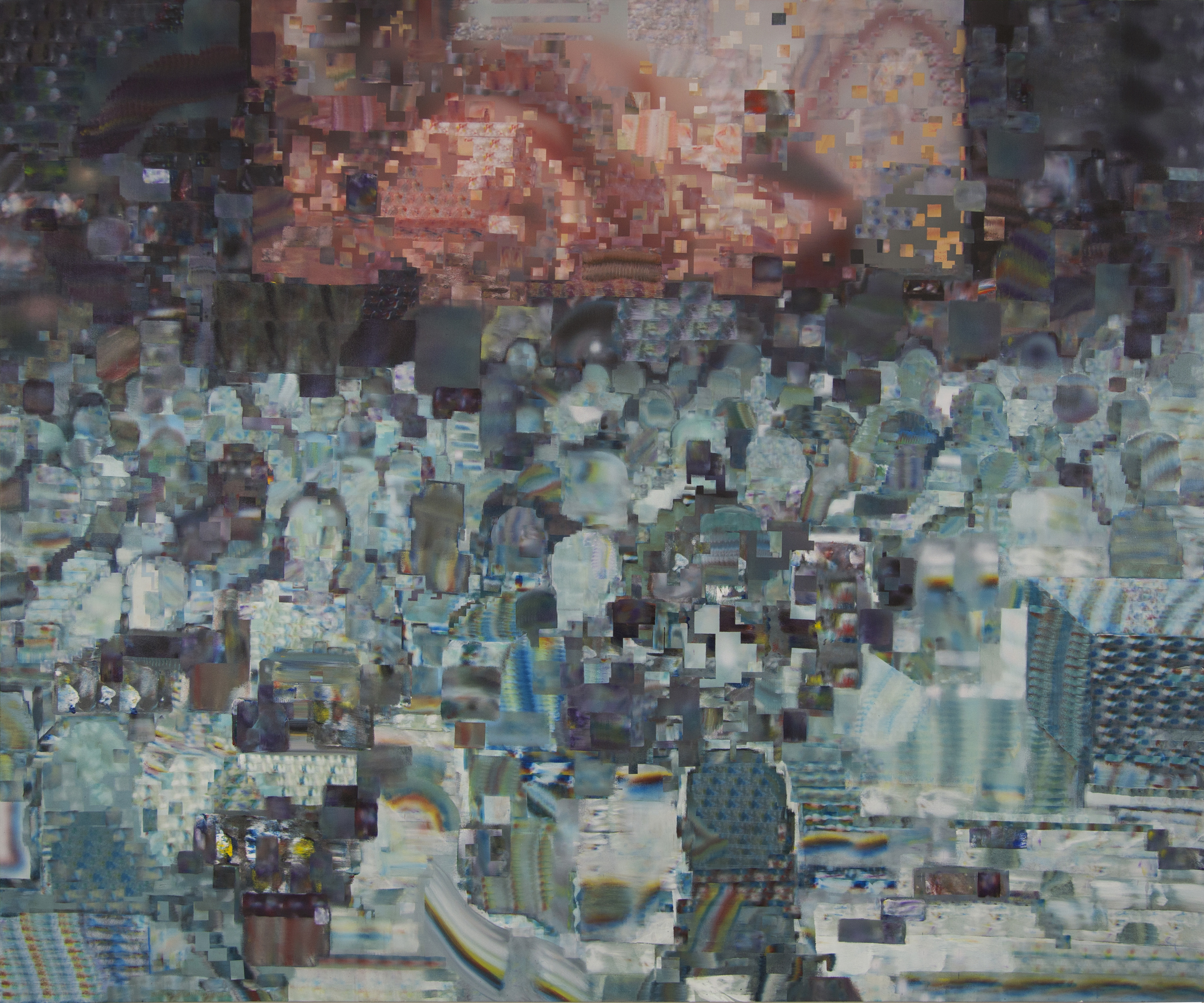About Taha
Baltimore City

Taha Heydari
Iranian, b. 1986
Lives and works in Baltimore, MD
Taha Heydari is interested in painting as a possibility of encountering what images do in relation to what they are made of. Heydari uses acrylic and various palette knives, rollers, and airbrush to create complex, highly detailed surfaces where he can accentuate the significance of tools, material, and technology in the act of representation. Pixelated broken tv images, caused by Iranian government satellite jamming,… more
Taha Heydari is interested in painting as a possibility of encountering what images do in relation to what they are made of. Heydari uses acrylic and various palette knives, rollers, and airbrush to create complex, highly detailed surfaces where he can accentuate the significance of tools, material, and technology in the act of representation. Pixelated broken tv images, caused by Iranian government satellite jamming,… more
Jump to a project:
Miss Iran
The series is focused on how the rise of an ideology, in this case the Islamic revolution of Iran 1978, can transform the visual elements of cultural products and suggest aesthetics. I have collected more than 200 hundred issues of the Iranian magazine Zan-e Rooz, published between from 1975 to 1981.
The content of the magazine would offer a tangible handhold for viewers interested in understanding the political and culturaltransformation of Iran, and the visual correspondents therein. I have started painting the covers of the Iranian magazines and advertisements, specifically those from the few years before and after of the 1978 Islamic revolution of Iran trying to underestand and represente this sudden daramatic change through the slow pace of an old medium like painting.
The content of the magazine would offer a tangible handhold for viewers interested in understanding the political and culturaltransformation of Iran, and the visual correspondents therein. I have started painting the covers of the Iranian magazines and advertisements, specifically those from the few years before and after of the 1978 Islamic revolution of Iran trying to underestand and represente this sudden daramatic change through the slow pace of an old medium like painting.
Running Rabbits
Running Rabbits, refers to the visual phenomenon of useless data skittering across a radar display screen, which occurs when a radar signal is disrupted by another in close proximity.
I try to adopt the visual style of new media to explore of the power of imagery in constructing contemporary consciousness. Source images are Drawing from online news and historical references, I manipulates them until they resemble corrupted image files, using exacting painterly techniques that approximate pixilation and glitch-like repetitions.
I chose charged pictures that are considered the documentation of social or political incidents. Since there are public agreements about what they purport to depict, there is often less conversation about what they are as objects with physical properties. Living in Iran, I saw glitchy images on the TV everyday, because the Iranian government was sending noise to prevent free access to particular tv channels- a technique called satellite jamming. I gradually became conscious of what was happening when the glitch occurred on the screen. It was a moment of separation between what images manifest, and what are they made of.
I try to adopt the visual style of new media to explore of the power of imagery in constructing contemporary consciousness. Source images are Drawing from online news and historical references, I manipulates them until they resemble corrupted image files, using exacting painterly techniques that approximate pixilation and glitch-like repetitions.
I chose charged pictures that are considered the documentation of social or political incidents. Since there are public agreements about what they purport to depict, there is often less conversation about what they are as objects with physical properties. Living in Iran, I saw glitchy images on the TV everyday, because the Iranian government was sending noise to prevent free access to particular tv channels- a technique called satellite jamming. I gradually became conscious of what was happening when the glitch occurred on the screen. It was a moment of separation between what images manifest, and what are they made of.
-
 The DiamondAcrylic on Canvas, 66 x 72 inches, 2015
The DiamondAcrylic on Canvas, 66 x 72 inches, 2015 -
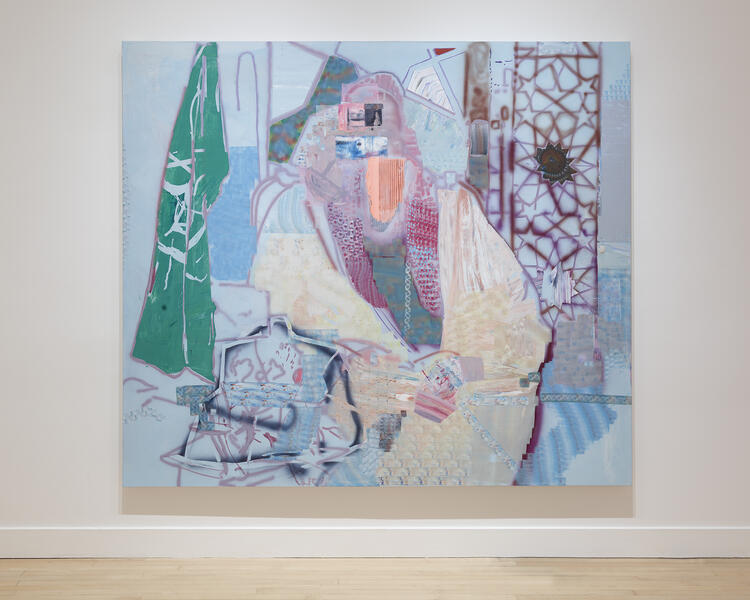 VendorAcrylic on Canvas, 84 x 96 inches, 2017 A scholar of Islamic law, seated before the flag of Saudi Arabia, which remains clearly legible. The work evokes the nation’s role as the world’s leading exporter of oil, but also suggests the Wahhabist ideology,an often extremist sect of Islam that has become increasingly influential in the Saudi Arabia.
VendorAcrylic on Canvas, 84 x 96 inches, 2017 A scholar of Islamic law, seated before the flag of Saudi Arabia, which remains clearly legible. The work evokes the nation’s role as the world’s leading exporter of oil, but also suggests the Wahhabist ideology,an often extremist sect of Islam that has become increasingly influential in the Saudi Arabia. -
 On the RoofAcrylic on Canvas, 72 x 92 inches, 2017 The source image for On the Roof is from a conservative website that supports the government in Iran. In the pictures police are seen destroying satellite dishes on the rooftops, thus preventing uncensored media access. Satellite jamming by sending “noise” has been a new way by which the government is able to censor and prohibit information, particularly TV channels from other countries. In addition to that more passive mode of interruption, they sometimes show off using physical force to produce more fear. The idea of jumping on people’s roofs and even sometimes using helicopters and acrobatic action to destroy an object (satellite dishes), is very violent and also extremely absurd.
On the RoofAcrylic on Canvas, 72 x 92 inches, 2017 The source image for On the Roof is from a conservative website that supports the government in Iran. In the pictures police are seen destroying satellite dishes on the rooftops, thus preventing uncensored media access. Satellite jamming by sending “noise” has been a new way by which the government is able to censor and prohibit information, particularly TV channels from other countries. In addition to that more passive mode of interruption, they sometimes show off using physical force to produce more fear. The idea of jumping on people’s roofs and even sometimes using helicopters and acrobatic action to destroy an object (satellite dishes), is very violent and also extremely absurd. -
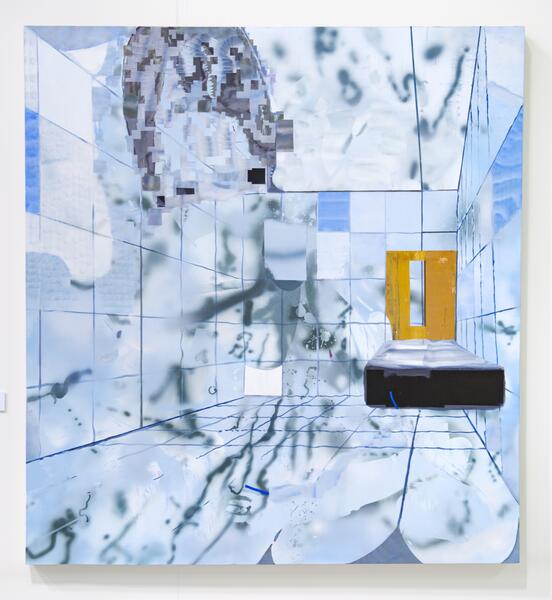 The CellAcrylic on Canvas, 60 x 65 inches, 2017
The CellAcrylic on Canvas, 60 x 65 inches, 2017 -
 Dark ChamberAcrylic on Canvas, 76 x 86 inches, 2015 Dark Chamber, utilizes a well-known photograph of German POWs being forced by American troops to watch film footage of the concentration camps.
Dark ChamberAcrylic on Canvas, 76 x 86 inches, 2015 Dark Chamber, utilizes a well-known photograph of German POWs being forced by American troops to watch film footage of the concentration camps. -
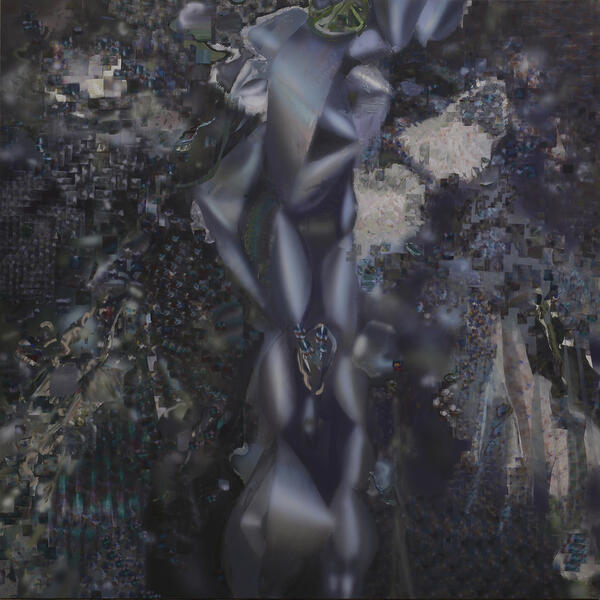 40thAcrylic on wood, 60 x 60 inches, 2017
40thAcrylic on wood, 60 x 60 inches, 2017
